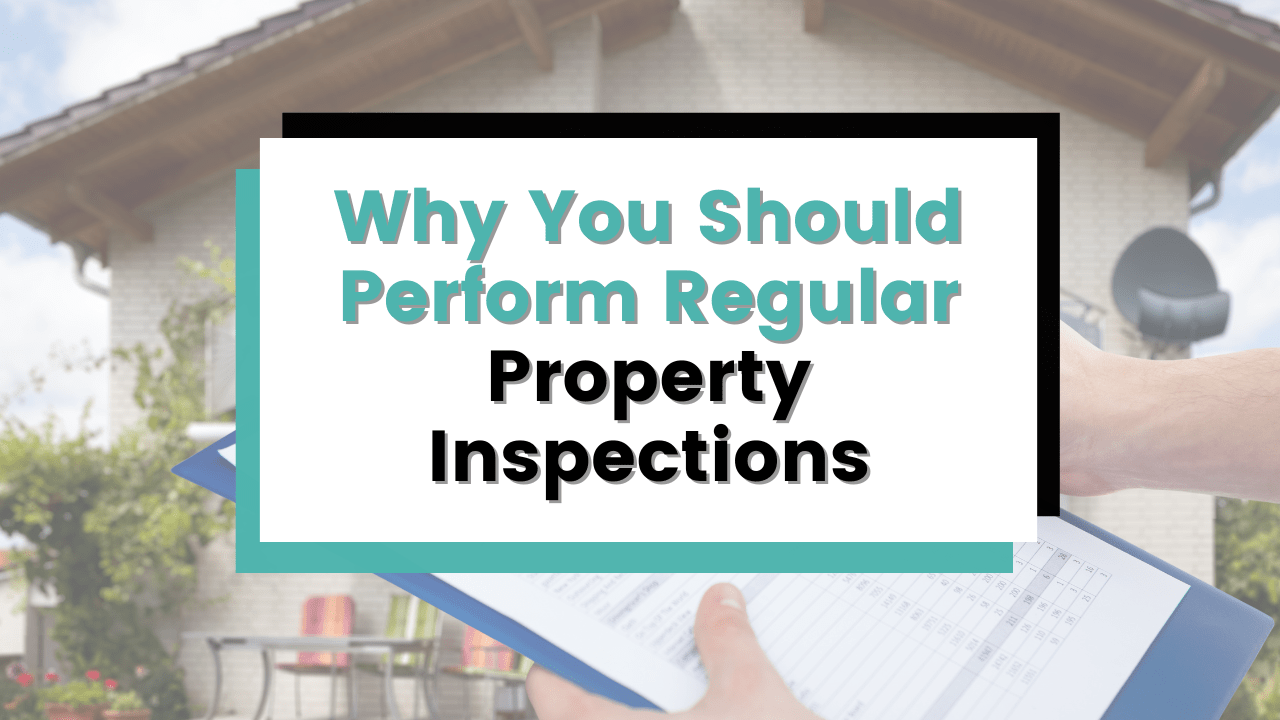
Regular property inspections are essential when you’re renting out a home or a building, and there are many good reasons to keep up with a robust inspection schedule.
Even if you have a fantastic, low-maintenance tenant who never complains in place, you want to get inside and look around once in a while. Even if your property is new and in good condition, you should conduct routine inspections.
Conducting walk-throughs of your property is essential in protecting the condition of your investment and avoiding deferred and unreported maintenance issues, which are always going to be more expensive and stressful than you’d like.
The move-in inspection and the move-out inspection are pretty standard. What about an inspection when your property is occupied? It can be uncomfortable to inspect an occupied property. You don’t want to invade your tenant’s privacy and you don’t want to be an inconvenience to a good renter.
That doesn’t mean you should skip the inspection.
When you include something in your lease agreement that says you’ll inspect once during a tenancy, your tenants will expect the visit. Don’t shy away from your property inspections just because you have a tenant in your unit.
Here’s why it’s so important to inspect your property regularly.
Inspections Document the Condition of your Property
Understanding the condition of your property cannot be a guessing game. You need documentation. You need a report.
The move-in inspection will establish a starting point for the tenancy. When you inspect before tenants move in, you’re doing two important things:
-
- You’re ensuring that the home is move-in ready. Tenants will expect to move into a property that’s functioning, clean, and safe.
- You’re noting the way the property looked before the tenants took possession. With a thorough inspection report, your tenants cannot claim at the end of the lease term that the doors were off their hinges or the carpets were stained before they moved in.
Conduct inspections at the beginning of the lease and the end of the lease that will demonstrate without a reasonable doubt what your property looks like. Ask your tenants to make any of their own notes when they move in, and then make sure all parties sign off on the inspection report.
Inspections Protect You against Deferred and Unreported Maintenance
Inspections will also protect the condition and value of your rental property.
Everyone expects that a home will suffer from general wear and tear during every tenancy. You know the wear and tear is coming, you know the wear and tear is your responsibility, and you have to budget for the repairs and replacements that are necessary.
Preventative and routine maintenance will reduce the risk of emergency maintenance. Inspections also help. Remember these tips when it comes to inspecting in order to protect yourself from deferred maintenance:
-
- Train your tenants to make timely maintenance requests, because every time you’re inside the property taking care of a repair, you can look around for other potential issues that need attention.
- Deferred maintenance is always more expensive than preventative or routine repairs. The longer you let a problem grow, the more expensive and complicated it’s going to become.
- Those routine inspections will give you the opportunity to check out some of the most used and easily broken systems and functions in your rental property. At the very least, you should check the plumbing, the electrical system, the HVAC, the appliances, and the roof.
If there are any indications that work needs to be done, make a note of it and get the repair scheduled as soon as possible.
Inspections are an Opportunity to Plan for Upgrades
Regular inspections mean you’re attuned to the improvements and upgrades your property may need.
This is a great rental market for landlords, but in our region, the competition is always fierce. It’s a crowded market. Help your property to be more attractive to the best tenants by making some great updates that will raise your rental value.
You don’t know where those opportunities are unless you’re inside, looking for them.
When you get inside the property for a routine inspection every year, you can make a list of things you might want to renovate. How does the paint look? Is the carpet in good shape? If the appliances continue to break down or start looking worn, consider replacing them. Regular inspections help you budget for these projects and upgrades sooner than they’ll be needed. You can plan to make these updates at lease renewal time.
Inspections Help You Hold Your Tenants Accountable
Good tenant screening and positive tenant relationships will help you ensure that your tenants follow the lease agreement. Inspections are also an important tool in enforcing your lease agreement.
Your lease agreement is likely to include a list of responsibilities you expect your tenant to pay attention to, and you probably have some rules and requirements listed there as well.
When you conduct regular inspections, you’re able to detect any potential warning signs that your property isn’t being cleaned or maintained the way the lease requires. You might find insects in the kitchen or air filters that haven’t been changed since the tenants moved in.
Inspection Logistics: When and How to Inspect Your Property
Inspecting an empty property before or after a tenant moves in is easy and done on your schedule entirely. Those mid-lease inspections, however, will require you to provide notice and to be flexible so you aren’t inconveniencing your tenants or violating their privacy or their right to quiet enjoyment of their property.
Here are some tips on how to inspect respectfully:
-
Consider Drive-By Inspections
You don’t always have to go inside the property. Just driving by the property can give you some idea of what’s going on there. When you’re in the neighborhood, drive by the property to see how things look from the street. You don’t have to schedule this with your tenants or even let them know you’re there.
When things look the way they should, you know that you probably have nothing to worry about. But, if you’re renting out a single-family home and you see a collection of junk cars parked on the lawn or there’s a lot of garbage piled up outside of a commercial building that you own, you might want to take some additional steps with your tenants.
The idea of a drive-by inspection is to make sure there aren’t any immediate or visible reasons that you want to get inside the property right away.
-
Reference Inspections in Your Lease Agreement
The lease is going to dictate how the tenancy progresses and it will also give your tenants notice that you do plan to inspect during the course of that tenancy. Most lease agreements will include a landlord’s right to enter for emergency purposes or to perform maintenance. You’ll also want your lease to include a landlord’s right to conduct a walk-through maintenance inspection every year. The language might be such that your tenant agrees to let the landlord or the property manager into the property with at least 48 hours of notice, for example.
When you’re discussing the lease agreement with your tenant before move-in, be sure to highlight this part of the lease so they know to expect an inspection.
-
Decide When You Should Inspect
The most important inspections, as we mentioned, are before a tenant moves in and after a tenant moves out. Outside of that schedule, you can decide when you conduct a routine inspection of your property when it’s occupied. There are a few different ideas about when you should conduct this inspection.
- Some owners prefer to inspect a few months after a tenant has moved in. This gives you the opportunity to see how they’ve settled in and to make any minor repairs that may be necessary but were unreported.
- Other owners prefer to wait for the halfway point. Six months into the lease term, you can schedule a maintenance inspection.
- Another option is to wait and inspect right before the lease renewal date is approaching. This could work if you want to check the property before making an offer for a lease renewal.
You can inspect when it seems to make sense to you. Always make sure to provide ample notice, and let your tenants know how long you plan to be there. They might want to be present when you’re inside the property.
If inspections seem like more than what you care to think about while renting out a property, we recommend that you partner with a local property management company.
 With experienced property management partners, you will know that your property is in excellent condition and the terms of your lease agreement are being followed. If you’d like to know more about how we manage rental property inspections, we’d be happy to share our process and some additional tips.
With experienced property management partners, you will know that your property is in excellent condition and the terms of your lease agreement are being followed. If you’d like to know more about how we manage rental property inspections, we’d be happy to share our process and some additional tips.
Please contact us at Stripe Management. We work with owners, investors, and both residential and commercial properties in Prince George’s County, Montgomery County, Washington, D.C., and anywhere in the DC metro area.
